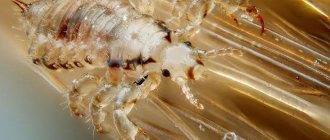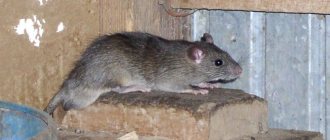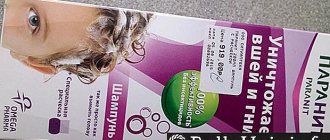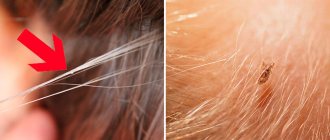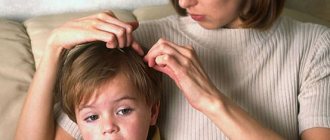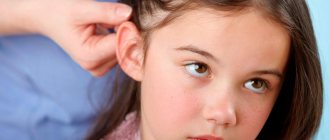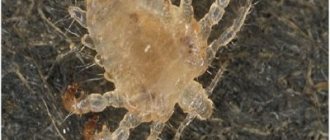What is anti-pediculosis styling?
The head louse is a blood-sucking insect that lays eggs during its life. The cause of lice can be neglect of hygiene rules, as well as contact with someone who is sick with it. After a lice infestation, the first signs of lice do not appear immediately. Only after 2 weeks the patient can feel all the unpleasant consequences of the disease.
To destroy insects in public places, special treatment is carried out, for which special means are used. Anti-pediculosis styling is presented in various variations. It is always issued in the form of a kit and meets all sanitary standards.
How is processing carried out?
Sanitation is carried out in a separate room. It should be well ventilated. The nurse's tactics when performing disinfestation are determined by the degree of infection of the patient, and therefore a treatment regimen for the patient is prescribed. Preparatory work involves performing a number of activities:
- cover the couch with oilcloth material and seat or lay the patient on it, having first put a pearl on him and a tourniquet around the hairline;
- explain to the patient the process of the upcoming manipulation;
- The medical worker conducting the procedure must put on an additional gown, gloves, a mask and prepare all the necessary equipment: anti-pediculosis agent, hair scissors, a basin in 2 copies, bags for disposal and subsequent disinfection, a comb, vinegar.
Anti-pediculosis treatment
Treatment algorithm for pediculosis:
- Prepare a solution to kill parasites in accordance with the instructions.
- Consistently treat hair against lice, avoiding contact of the product with mucous membranes and face. Each strand should be processed separately.
- If your hair is long, put it in a bun and cover it with a plastic scarf.
- Maintain exposure according to the drug manufacturer's recommendations.
- After the specified time has passed, rinse off the product with warm water, after removing any remaining product, wash your hair with detergent shampoo and rinse with a vinegar solution.
- After applying the vinegar solution, tie your hair with a plastic scarf and leave it in this state for 15-20 minutes.
- Rinse your hair again with warm water and dry with a towel.
- Place the patient on a chair and place paper on the floor to make it easier to dispose of insects later. Be sure to comb out dead insects and nits using a fine-tooth comb.
- Periodically remove adhering parasites from the comb using a cotton swab soaked in alcohol.
- At the end of the procedure, re-examine the patient and make sure there are no lice and nits.
- If necessary, re-treatment of hair for pediculosis is prescribed.
Signs of lice
The following symptoms are characteristic of pediculosis:
- Itchy scalp.
- Rough spots on the skin that appear after parasite bites.
- Skin pigmentation resulting from hemorrhages in the tissue of the inflammatory process, which is provoked by the saliva of lice.
- Presence of tangles. The phenomenon is quite rare, but occurs when the hair gets tangled and stuck together with purulent-serous insect waste. Scratching can lead to secondary skin diseases such as dermatitis and eczema.
Pediculosis in an advanced form can manifest itself with an increase in temperature and swelling in the area of the lymph nodes.
How much does installation cost?
Anti-pediculosis styling according to SanPin includes all consumables and medications. The average cost of this complex is 6552 rubles.
According to the requirements of SanPin, anti-pediculosis styling is a set of mandatory therapeutic manipulations that are aimed at preventing and localizing outbreaks of pediculosis. The fight against head, body and pubic lice is carried out in hospital infectious diseases departments with strict adherence to the established algorithm of actions. The procedure for the prevention and complex treatment of head lice is regulated by Order No. 342.
This document contains a list of supplies that are needed to get rid of lice, as well as instructions for medical personnel. Supervision over the timely elimination of potential foci of lice is carried out by sanitary epidemiological authorities, which are notified of each case of lice infestation.
Prevention of head lice
To prevent the appearance of parasites, you need to disinfect the room and change linen regularly. If the infection affects one of the family members, it is important to inspect all other residents of the apartment. If lice are found, you need to immediately begin to fight them. It is necessary to act comprehensively. The chemical method consists of using certain products and agents that include anti-pediculosis styling. Mechanical is based on the use of a comb, through which nits and their eggs will be removed from the hair.
Remedies for head lice
The main substances for killing insects are ovicides (emulsions, shampoos, lotions) for one-time treatment and neocides (shampoos, soaps, etc.) for two-time treatment.
To combat parasites, products such as vinegar, pyrethrum powder, tar soap, and various lotions, such as Nittifor, are used.
The list of preparations intended for disinfestation of things includes soap-kerosene emulsion, concentrates of karbofos, sulfidos, sodium carbonate and others.
Anti-pediculosis styling: composition
This installation must include:
- A bag or sack for placing the things of a person with lice into it.
- Tray for cut hair.
- Protective oilcloth cut.
- Rubber gloves.
- Scissors.
- Fine-tooth comb.
- Hair clipper.
- Alcohol lamp.
- Head scarf or plastic cap.
- Cotton wool.
- Table vinegar.
- Lice killer.
- Shampoo.
- Chemicals for treating rooms and bed linen.
- Sprayer.
- The robe is disposable.
- Instructions for using styling.
Examination for lice
Medical workers are required to conduct head lice inspections in preschool educational institutions once a month, at school after the holidays, and selectively by class every month. At enterprises, institutions, and organizations, mandatory inspections must also be carried out twice a year.
According to the order of the Ministry of Health, it is mandatory to carry out a preventive examination of patients at the sanitary inspection station when placing a patient for inpatient treatment or in a maternity hospital. The inspection procedure involves the use of a fine-toothed comb, a magnifying glass or a magnifying glass.
Executing the procedure
The patient's hair is processed. For this purpose, anti-pediculosis agents included in the styling are used. After this, a cap is put on the head. After 20 minutes, the curls are washed with shampoo from the set. Dried hair is combed strand by strand with a fine comb. Completion of the procedure involves the following steps:
- The patient's personal belongings are placed in bags for disinfection.
- All instruments used for the procedure (gloves, apron, gown) are placed in a bag.
- The patient's hair is examined again.
- After each inspection, the comb is doused with boiling water or treated with alcohol.
After the disinfection for which the anti-lice treatment was used is completed, the room and objects previously used by a person infected with lice are treated with special preparations.
How to use styling
Styling with pediculocidal agents is used according to a specific algorithm. For the procedure to be effective, the following rules must be followed:
- The person carrying out the treatment puts on a robe, headscarf, gloves, and prepares the necessary preparations.
- The patient is carefully wrapped in oilcloth. A bandage is placed on his eyes, which will protect his vision from getting the drug.
- The patient's hair is combed, covered with a solution, and a cap is put on top. They take the right amount of time.
- The solution is washed off first with water, then with shampoo.
- Adult lice and larvae are carefully removed from dried hair.
Composition - what is included in the contents of anti-pediculosis styling?
The composition of the styling is quite detailed and numerous - there is not only everything necessary to rid the patient of lice, but also protection for the doctor or anyone else doing the cleaning, as well as products included there for the purpose of neutralizing waste (the patient’s hair, etc.). ).
All this is necessary because lice, although visible to the naked eye, are faint. Even smaller than adult insects are their eggs, colloquially called “nits.” You can’t just throw away objects infected with parasites - there is a chance that they will find a new victim, if not in a person, then in a stray animal that will spread the infection for a long time.
IMPORTANT! There are at least two compositions of anti-pediculosis styling - classic and modern. By today's standards, the modern one is more convenient, less traumatic for the patient and safer for the environment.
Anti-pediculosis styling should be stored in a sealed and close to sterile container, so that in an emergency you can easily and quickly find and not forget all the following things:
- metal (or hard plastic) fine comb;
- magnifying glass (optional, in case the inspector does not have keen vision);
- scissors;
- hair clipper (trimmer);
- protective gloves made of latex or rubber;
- a yellow bag marked “hazardous waste” for cut hair;
- drape for the patient;
- bucket for collecting hair;
- headscarf (according to the number of those present during disinfestation);
- disposable shoe covers;
- medical cotton wool;
- protective overalls and respirator mask for the doctor;
- sprayer;
- nine percent vinegar and alcohol lamp;
- medications currently approved by law to combat lice.
As can be seen from the composition, the doctor must be completely protected - after contact with several infected people, his own chances of catching parasites are close to one hundred percent. Clothing and hair, if the infection is serious and there is a need to cut them off, must be disposed of properly. Starting disinsection without having all the installation components is dangerous and potentially pointless , since by incorrectly removing one source of infection, you can easily provoke the appearance of a new one.
Health and healthy lifestyleOrder 342 on pediculosis
Treatment of hair with an anti-lice product, according to its instructions. For example, “Nittifor” is applied to damp hair, covered with a scarf and a towel.
Responsibility for conducting preventive examinations rests with the medical professional. The results are entered into a special form and a number is entered.
The new SanPiN for pediculosis 2021 defines the rules, the procedure for preventive measures, and the algorithm for treatment for pediculosis. The same document lists the rules for the prevention of scabies, the abdominal type, which is spread by lice. The joint venture on typhus and pediculosis and scabies is mandatory throughout the Russian Federation.
General cleaning of the wards is carried out at least once a month with thorough washing of the walls, floors, and wiping down the furniture.
Acting destructively on all stages of lice (ovicides) - emulsion concentrates, shampoos, lotions and other products approved for these purposes in accordance with the established procedure.
The Ministry of Health includes a set of measures aimed at improving sanitary and hygienic conditions and the epidemiological situation in public institutions and organizations.
To eliminate parasites living on clothing and other human belongings, measures such as boiling and ironing are used. For 15 minutes. clothes are boiled in a 2% soda ash solution and ironed on both sides. For a better effect, you can process things in a special chamber.
The Ministry of Health includes a set of measures aimed at improving sanitary and hygienic conditions and the epidemiological situation in public institutions and organizations.
In this case, the patient is recommended to shave the hair in the areas where the parasites live. Then the person and his sexual partner are treated, because this type of lice is sexually transmitted. The manipulation is carried out with special anti-pediculosis products of your choice - 0.5% chlorophos solution, Neofos, Carbozol aerosols. After the procedure, the room is ventilated.
Treatment of people or linen infested with lice should be carried out strictly in accordance with guidelines, instructions or labels for each specific product.
In this case, the patient is recommended to shave the hair in the areas where the parasites live. Then the person and his sexual partner are treated, because this type of lice is sexually transmitted.
Put on a gown and rubber gloves, prepare the solution according to the instructions. Put an oilcloth on the patient. The hair is distributed into strands.
- Treat hair with anti-lice medication.
- Long hair should be styled in a bun.
- A special plastic cap is put on top.
- Leave for the time specified in the instructions.
- Wash off with plenty of water and use shampoo.
- Dilute the vinegar, rinse your hair, put on the cap again, and leave for 15 minutes.
- Rinse again.
- Dry with a towel.
- Comb out dead lice and nits. It is advisable to use a special comb for these purposes.
- Check hair after styling.
Depending on the site of infection, they distinguish between the head, pubic and body parts, but in advanced cases they can occur in one person.
The Department of State Sanitary and Epidemiological Supervision, the Department of Organization of Medical Care to the Population, and the Department of Maternal and Child Health to organize in the first quarter of 1999 an inspection of the work of health authorities and state sanitary and epidemiological supervision centers in the Kostroma, Lipetsk regions and Moscow on the prevention of epidemic typhus and the fight against head lice.
Indisputable evidence of lice infection will be the insects themselves, very small, barely visible to the eye. Then you will see the so-called nits, that is, lice eggs glued to the hair near the roots.
If several infected children are found in a class or group, quarantine is declared. Maximum duration 30 days. During this time, a complete disinsection of the premises, beds, furniture, bedding is carried out, and prevention of re-infection is carried out. The SES can extend the quarantine period.
Appendix No. 4 contains regulatory documents on pediculosis, which define the role of lice in the spread of severe infectious diseases and recommends regular measures to combat pediculosis among the adult population and in children's institutions.
The order of the Ministry of Health of the Russian Federation on pediculosis contains Appendix No. 4, which provides guidelines for the prevention and control of lice. Order number on pediculosis 342 dated November 26, 1998. The title of the document is “On strengthening measures to prevent epidemic typhus and combat pediculosis.”
The disease is caused by small parasites - lice that feed on human blood. Body length from 1 to 4 mm. The female lays 4 to 5 eggs daily. The nit attaches to the hair closer to the roots. What lice and nits look like on hair is shown in the photo.
Insect saliva contains an enzyme that thins the blood and facilitates the feeding process. The special substance is a strong allergen. An increase in the concentration of an allergen in a person’s blood leads to an allergic reaction, which is manifested by severe itching and irritation of the skin.
The causative agents of these diseases are found in the stomach and feces of lice. Human infection occurs when secretions from infected louses get into wounds and scratching areas on the body.
Pediculosis is a parasitic disease caused by head and body lice, which feed on human blood and are of great epidemic importance because they can be carriers of typhus, Brill's disease, relapsing fever and Volyn fever.
According to Order No. 342 on pediculosis, anti-pediculosis styling can be avoided by preventing the spread of infection. The best preventative measure is inspection. It is carried out in a well-lit room using a magnifying glass or magnifying glass. The physician should pay great attention to the back of the head, temples and forehead.
The Ministry of Health includes a set of measures aimed at improving sanitary and hygienic conditions and the epidemiological situation in public institutions and organizations. As well as specific measures for the treatment of pediculosis in infected individuals. The order on pediculosis provides methodological recommendations for detection, prevention, and treatment. The organization and implementation of measures to combat pediculosis is carried out by medical workers.
- Conducting routine inspections of the population. Carried out by medical professionals. It is carried out in preschool institutions, schools, dormitories, nursing homes, boarding schools and other public organizations.
- Providing the necessary conditions to prevent lice in the team. Sanitary inspection rooms, baths, laundries, showers, hot water.
- Availability of medical personnel to conduct examinations.
- Organization of events in foci of pediculosis infection.
- Implementation of outreach work.
Regulatory documents on pediculosis explain that those infected are individuals who are found to have dead or live lice, or dry, full-fledged nits.
Each case must be registered. The information is transmitted to the sanitary and epidemiological service of the Russian Federation. The patient is not allowed to visit public places for 2 weeks. During this time, he must undergo full treatment. Inspections are carried out at the source of infection for a whole month, every 10 days.
- students of higher educational institutions, vocational schools. 4 times a year selectively or completely. Mandatory examination at the beginning and end of the school year, after the holidays;
- students of schools, boarding schools, kindergartens;
- children going on holiday to camps, sanatoriums, medical clinics;
- employees of enterprises, organizations, institutions;
- patients admitted to the hospital;
- residents of dormitories and communal apartments;
- medical workers, service personnel.
The inspection is carried out in a well-lit place using a magnifying glass. Particular attention is paid to hair in the area of the temples, forehead, and back of the head. In these places, lice lay nit eggs, which remain on the hair even after the larvae hatch. The absence of lice does not suggest that the disease is at an end stage.
Responsibility for carrying out treatment and preventive measures rests with the administration and management. The results of the examination are recorded in accordance with the resolution of the Ministry of Health.
Prevention of lice
Appendix No. 4 to this order prescribes the following measures to prevent the spread of lice:
- Routine examinations of the population by health workers in kindergartens, schools, dormitories, boarding schools, nursing homes, etc.
- Creating the necessary conditions to prevent the spread of lice during collective living: baths, showers, laundries with hot water, sanitary inspection rooms.
- Availability of adequate medical personnel to conduct examinations.
- Appropriate measures in foci of head lice infection.
- Explanatory educational program among the population.
What is anti-pediculosis styling and where should it be located?
All specialized institutions for children and medical organizations that receive patients on an outpatient or inpatient basis must have a first aid kit, which must necessarily include pediculocidal agents and anti-pediculosis styling.
Pediculosis should be combated comprehensively. It is necessary to treat both the infected person and his belongings, as well as his home. For this purpose, there is anti-pediculosis styling in sanitation.
Anti-pediculosis styling is a set of medications and things intended for treating patients.
Prevention of lice and pediculosis
We reviewed Order No. 342, anti-pediculosis styling. Finally, let’s see what effective preventive measures this document recommends:
- Periodic bathing with mandatory washing of hair - at least once every 10 days.
- Change of bed linen - at least twice a month.
- Systematic washing of clothes and personal items as they become dirty, followed by treatment with an iron with a “steam” function.
- Daily combing of hair, cutting as necessary.
- Cleaning outerwear items and following the rules for storing them.
- Periodic wet cleaning of the house.
- Keeping your home clean.
Order No. 342 of the Ministry of Health of the Russian Federation offers effective measures for the prevention, treatment, and detection of head lice and typhus. It also contains a special anti-pediculosis composition that helps to quickly deal with the problem.
